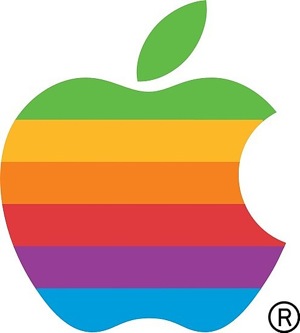Apple iCloud: Syncing and Distributed Storage Over Streaming and Centralized Storage

There has been a lot of speculation over how Apple's iCloud would work. With the Apple Worldwide Developers Conference keynotes having just completed, we finally learned the truth. We can handle it. They made some interesting and cost effective architecture choices that preserved the value of their devices and the basic model of how their existing services work.
A lot of pundits foretold that with all the datacenters Apple was building we would get a streaming music solution. Only one copy of music would be stored and then streamed on demand to everyone. Or they could go the Google brute force method and copy up all a user's music and play it on demand.
Apple did neither. The chose an interesting middle path that's not Google, Amazon, or even MobileMe.
They key idea is you no longer need a PC. Device content is now synced over the air and is managed by the cloud, not your legacy computer. Your data may not even be stored in the cloud, but the whole management, syncing, and control of content is done by the cloud instead of the PC. PCs are now just another device on par with the iPhone and iPad.
What happens to your data depends on the type of data. Apple gives you 5GB of free storage, which doesn't sound like a lot at all. The twist here is purchased music, apps, and books, and photos will not count against free storage because these are stored on your devices. Photos hit the cloud for a maximum of 30 days, which allows your devices 30 days to contact the cloud and download the photos, after that I guess they are lost. All the big data is stored on your devices.
Some smaller content is stored in the cloud. This content is mail, documents, Camera Roll, account information, settings, and other app data. This data is much smaller than photos, videos, and music, so it's a manageable amount of storage per user. It wasn't talked about, but I'd imagine storage could be increased for a price, so any increased storage usage would be funded.
What Apple ended up creating is a syncing model where large content is synced between devices, smaller meta-data type content is stored in the cloud, and shared changeable data like mail is stored in the cloud. The advantages of this approach are:
- It's consistent with how iTunes works now. Instead of a PC there's a cloud. No revolution here.
- It's cost efficient, which is important because iCloud is free. Storage will increase linearly based on the number of users, not the number of media items, which is a much more manageable curve. Apple is not on the hook for ever increasing amounts of data storage.
- Bandwidth usage is bursty during syncing operations, but is otherwise low, other than background notifications, etc. In a streaming system bandwidth usage is continuous and high, which shifts their cost structure to that of being a CDN. The path taken here by Apple skips that whole problem. Most if this will probably be over WiFi instead of 3G so user bandwidth caps can be avoided.
- The role for devices is preserved. Devices aren't just a thin client for the cloud. The meat of the application logic is still solidly on the device and not the cloud. Apple can still sell high margin devices and you can get your media on all your devices. And since these devices already have storage, there's no need to duplicate storage in the cloud, which is more economical.
- The low cost of Apple's new Scan and Match service is made possible because of the minimal storage and bandwidth costs. They can just keep one copy and push it down to devices for local access. What other vendor has this ability? The devices that people are already used to buying offload this cost and are themselves a profit center.
- This will really drive the demand for larger and larger SSD drives. The 1000 image storage limit for photos on your devices will be a big negative.
Low level stuff like how merging happens if conflicting changes are made on different devices was not talked about, but the details will be interesting. There are a still a lot of details that need to be explained about where things are stored, how much can be stored, how they get synced, and how much it will cost. And this is still a very personal service. It's device centric. It's not social, there doesn't appear to be any sharing, which seems a strange oversight.
Apple has taken an interesting middle path in their architecture and there's a lot to learn from. They aren't just storing stuff like Amazon and Google. They aren't creating another streaming service. They are creating a product unique to their ecosystem, an environment users will find difficult to leave.
I should mention that this is my very early impression of how things work taken from the presentation and poking around the iCloud site. It's possible I could have got some of it wrong.
Related Articles
- Streaming video from the WWDC 2011 keynote
- Fail: Apple's New iCloud Service Won't Let Users Stream Content From The Cloud by Dan Rayburn: users have no ability to stream that content from the cloud. All content has to be downloaded to each iOS device which in my mind, defeats the whole purpose of the cloud when it comes to rich media content.
- Apple’s iCloud: Sunny Days or Stormy Weather? by Tim Siglin: Too many variables outside Apple's control to tame the wild cat of a mobile iOS streaming-only solution. At least for the moment.
- Apple’s cloud sure doesn’t look like Google’s by Anthony Ha.
- Cloud Drive Comparison by David Strom
- iCloud for Developers: This Could Get Interesting by Sarah Perez




